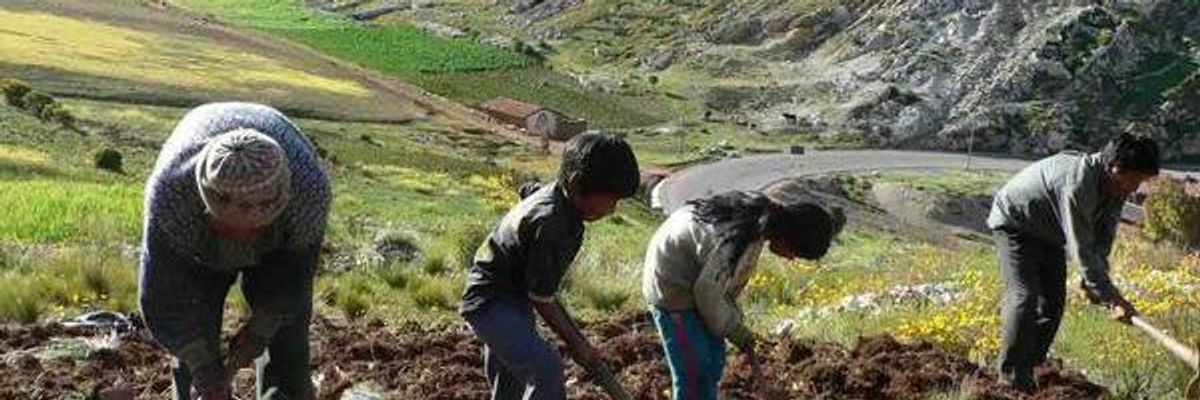A global effort to give small farmers and indigenous communities control over lands is the best hope we have to deal with climate change and feed the world's growing population.
As governments converge on Lima for the UN Climate Change Conference, the brutal killing of Peruvian indigenous activist Edwin Chota and three other Ashaninka men this past September is shining a spotlight on the connection between deforestation and indigenous land rights. The simple truth is plain to see: the most effective and just way to prevent deforestation and its impacts on the climate is to recognise and respect the sovereignty of indigenous peoples' over their territories.
Peru's violent land conflicts also bring into focus another issue of equal importance to climate change that can no longer be ignored: the concentration of farmland in the hands of a few.
Small farms of less than 5 hectares represent 78% of all farms in Peru, but occupy a mere 6% of the country's agricultural lands. This disturbing figure mirrors the global situation. Worldwide, small farms account for 90% of all farms yet occupy less than a quarter of the agricultural land. This is bad news for the climate.
Just as the dispossession of indigenous peoples of their territories has opened the door to destructive, unsustainable resource extraction, the dispossession of peasants of their lands has laid the basis for an industrial food system that, amongst its many negative effects, is responsible for 44-57% of all global greenhouse gas emissions.
Food does not have to make such an overweight contribution to climate change. GRAIN estimates that a worldwide redistribution of lands to small farmers and indigenous communities, combined with policies to support local markets and cut the use of chemicals, can reduce global greenhouse gas emissions by half within a few decades and significantly curb deforestation. Simply by rebuilding the organic matter that has been depleted by decades of industrial agriculture, small farmers can put a quarter of the excess carbon dioxide that is now in the atmosphere back into the soil.
Giving lands back to small farmers and indigenous communities is also the most effective way to deal with the challenges of feeding a growing global population in an era of climate chaos. The available global data show that small farmers are more efficient at producing food than big plantations. On the fraction of lands that they have held on to, small farmers and indigenous communities continue to produce most of the world's food - 80% of the food in developing countries says the FAO. Even in Brazil, a powerhouse of industrial agriculture, small farms occupy a quarter of the farmlands but produce 87% of the country's cassava, 69% of its beans, 59% of its pork, 58% of its cow milk, 50% of its chickens, 46% of its maize, 33.8% of its rice and 30% of its cattle.
The twin needs of feeding the world and cooling the planet can be met. But not if the governments meeting in Lima continue to ignore and violently repress the struggles of their peasants and indigenous peoples for land.
